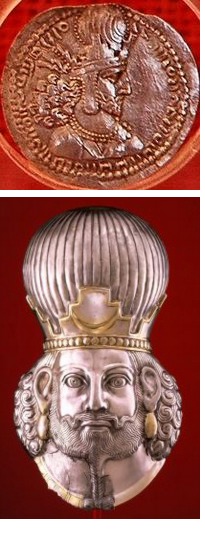 Gondeshapur was the intellectual centre of the Persian empire during its Sasanian period (224 - 651). Its Academy offered medical training, philosophy, theology and science based on Zoroastrian thought and Greek and Indian science texts.
Gondeshapur was the intellectual centre of the Persian empire during its Sasanian period (224 - 651). Its Academy offered medical training, philosophy, theology and science based on Zoroastrian thought and Greek and Indian science texts.Centre of learning of the Persian empire.
 Gondeshapur was the intellectual centre of the Persian empire during its Sasanian period (224 - 651). Its Academy offered medical training, philosophy, theology and science based on Zoroastrian thought and Greek and Indian science texts.
Gondeshapur was the intellectual centre of the Persian empire during its Sasanian period (224 - 651). Its Academy offered medical training, philosophy, theology and science based on Zoroastrian thought and Greek and Indian science texts.
Gondeshapur was founded by Shapur I (Latin Sapor, Arabic Sabur), who reigned until his death in 272. Shapur had expanded and strengthened the Sasanian rule established by his father Ardashir I through military excursions against the Roman empire that resulted in enormous booty and vast numbers of captives. Many of the captives had better technical skills than the Persians, and Shapur put them to work to improve the infrastucture of his empire.
Gondeshapur was built by captives gained from the sacking of the Roman province of Antioch. It grew into a flourishing city under the long reign of Shapur II (309 - 379) and rose to become the leading science centre of the Middle East under Khosrow I, a great patron of the arts and sciences who ruled from 531 to 579. Khosrow welcomed the Greek philospher-scientists who had lost their employment after the closure of the Academy in Athens in 529 and promoted the teaching of sciences. Reports state that he sent the famous physician Burzoe to India to obtain Sanskrit books on medical subjects for translation into Persian.
Before the rise of Arab science the Academy of Gondeshapur was the leading science centre in the Middle East and was visited by students from all parts of the world. Its teaching hospital was famous around the Mediterranean Sea.
Images: Coin with portrait of Shapur I (top), public domain (Wikipedia)
portrait mask of Shapur II (bottom), Metropolitan Museum, New York; public domain (Wikipedia)